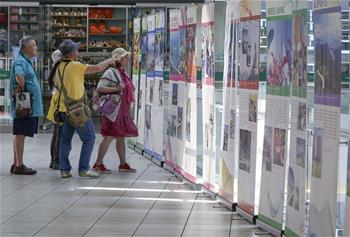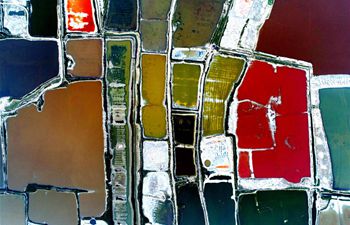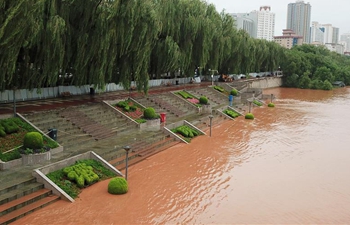LONDON, July 25 (Xinhua) -- The secrets of a Dutch sailing ship that sank off the coast of England on its way to Asia 278 years ago are to be revealed to the public for the first time, it was announced Wednesday.
New evidence has uncovered a tale of smuggling by crew members aboard the Dutch East India Company's ship the Rooswijk, which was wrecked off the Kent coast in southern England in 1740.
The Rooswijk sank on the treacherous Goodwin Sands in January 1740 with all 237 crew lost. Thousands of vessels are known to have been wrecked in an area off Kent known as "the great ship swallower".
The recent discovery at the site of the wreck of silver coins with small holes deliberately made in them suggests they were sewn into the clothes of the crew to smuggle to the Dutch East Indies.
The Rooswijk set off on its last journey, from the Netherlands to Batavia, the modern-day Jakarta, with a large cargo of silver destined for trade in Asia. The precious metal was in high demand and was exchanged for Asian spices and porcelain.
Dutch and British maritime archaeologists have carried our dives to the protected wreck site of the Rooswijk and during an Open weekend on August 11 and 12 the public will have their first chance to view the extraordinary finds recovered from the wreck.
Researchers in the Netherlands have now positively identified 19 of the 237 members of the Rooswijk's crew. Those identified include a senior surgeon who travelled to the East and back several times (Gerrit Hendrik Huffelman), a 19-year-old on his first voyage (Thomas Huijdekoper) and a sailor who had previously survived an earlier shipwreck.
After the wreck was first found by a sports diver, archaeologists uncovered a large number of coins that were not part of the sanctioned cargo. It suggests that the Rooswijk's passengers and crew were carrying extra silver to trade illegally.
Some coins have small holes deliberately made in them, an indication that the crew sewed them into their clothes to smuggle to the Dutch East Indies. Some were also smuggling silver in their shoes and belts, such was the demand overseas for the precious metal.
As a protected wreck site the Rooswijk's remains are owned by the Dutch Government, and managed by Historic England on behalf of the Department for Digital, Culture, Media and Sport (DCMS).











